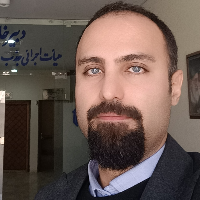Rethinking the Concept of Biological Health of the Contemporary Iranian-Islamic Neighborhood in the Post-Corona Era
Statement:
The neighborhood has always been considered as the turning point of thinking about the city. Neighborhoods in the past had internal cohesion and spatial continuity and had a homogeneous social fabric. In the contemporary era, especially since the second decade of the 13th century, in line with the political, social and economic developments of the society, the subsequent compilation of plans and macro-policy-making documents and its physical manifestation at the regional-urban level caused the collapse of the economic self-reliance structures, the coherent social and physical shape of the neighborhood, and its importance as the cornerstone of urban planning and design began to decline. This phenomenon has also had many effects on the lived experience of the neighborhood residents and made their healthy coexistence vulnerable in different dimensions. The emergence of the Corona epidemic has been one of these crises that has caused immediate changes in the way of living and new demands in the last four years. The daily worries caused by the epidemic have put the physical, mental and psychological health of the neighborhood residents at risk. Goals: Therefore, the main objectives of the research are 1. Rethinking the concept of the neighborhood as the center of the Iranian-Islamic city and 2. Rethinking the concept of neighborhood health as required by the post-pandemic era.
This research has been developed in terms of its scientific-review nature and based on the correspondence of experiences and literature of two fundamental concepts "Iranian-Islamic neighborhood" and the emerging concept of "pandemy". In terms of the type of research, it is applied, developmental and based on the research method, the theme is based on this, and the studies related to "neighborhood" are based on two physical-spatial and socio-economic components through searching religious texts, jurisprudence and Islamic Sharia, and the interpretations of Islamic thinkers from the Holy Qur'an, the Sunna of the Prophet (PBUH) and Nahj al-Balaghah.Also, studies related to "epidemic" by searching in Science direct, Springer, Scopus and Elsevier databases based on the researcher's category of "bio-medical, bio-psychological and bio-geographical" from the review of 182 valid articles were conducted. The study was carried out so that, based on the obtained data, the content correspondence of the two concepts of the Iranian-Islamic neighborhood and the epidemic, as well as the realization of the research goals, would be possible.
Based on the findings of the research, 18 criteria related to bio-location, 10 criteria related to bio-psychology and 7 criteria related to bio-medicine have been promoted in the field of contemporary urban planning. The summary of the criteria related to the Iranian-Islamic neighborhood also confirms 18 criteria as well. Examining the basis of the criteria of livability during the pandemic and the criteria of the Iranian-Islamic neighborhood shows that these two heterogeneous phenomena (in terms of life and time) not only do not have fundamental contradictions in content, but also have a content coherence. It is evident between the criteria. This research is important because it shows that the Islamic neighborhood has the possibility of development in life and improving the health of its residents in such a way that it can be used with the contemporary interpretation of the epidemic in the field of improving the health of the Iranian society. Therefore, the importance of the implicit thought in non-Islamic urban planning in the field of "healthy neighborhood in the contemporary era" under the pretext of the emerging phenomenon of the Corona epidemic is criticized and strongly needs to be reconsidered.
- حق عضویت دریافتی صرف حمایت از نشریات عضو و نگهداری، تکمیل و توسعه مگیران میشود.
- پرداخت حق اشتراک و دانلود مقالات اجازه بازنشر آن در سایر رسانههای چاپی و دیجیتال را به کاربر نمیدهد.


